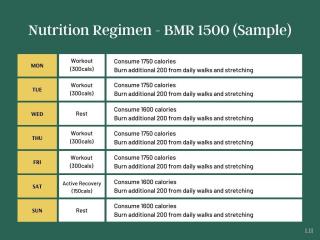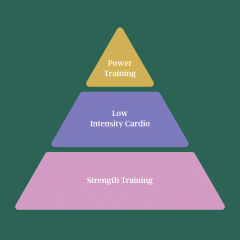There are notes for just about anything in life: meeting memos, grocery lists, study sheets, speech lines. Learning how to organize notes can give you a huge personal and professional boost and keep you organized while living life.
To stay on top of things, regroup and start picking up your notes one at a time to start organizing. The famous author, Anne Lamott, in her book about writing, teaches writers to do it bird-by-bird; in other words, do it step-by-step.
What could you achieve if you learned how to organize your notes in a neat package so that, whenever you needed them, you could snatch them out and use them, pronto?
This article will walk you through some detailed tips on how to organize your notes so you can remain on top of your game.
1. Take a Breath
Feeling scattered is normal when your notes are not organized, so take a breath. Remind yourself that you’re in-charge. Now that you feel in control again, stop everything and take three deep and long breaths. Gather yourself together, and take this time take stock of the kinds of notes you’re working with.
Just the mere act of stopping and knowing that you’re in charge changes your perspective. You’ll feel on top of things immediately. Once you’re in this state, you can start to work.
2. Choose Your Method
There are different methods of taking notes, and I will walk you through some of the most popular ones, but, first, why is it so important to take notes properly?
Let me break it down for you. The following are manners of recording notes that will make you more successful with any endeavor:
The Cornell Method
The Cornell note-taking method helps organize notes into summaries that are easy to digest. This method is convenient because the main points, details, study cues, and summary are all kept in one place.
The note page is divided into three sections:
Take notes during a conference or class using the main section. After the conference, write down things you’ll need to remember and a prompt for each at the cues section so you can review your notes. Write a summary of your notes in the summary segment at the bottom.Using the Cornell method, you can cover all types of events, lectures, or even meetings.
The Outline Method

The outline method is one of the best and most popular note-taking methods for students and professionals. It allows you to organize your notes in a structured format. This helps you save a lot of time for further reviewing and editing.
As the method’s name suggests, it requires you to structure your notes in the form of an outline by using bullet points to represent different topics and subtopics.
Start writing main topics on the far left of the page and add related subtopics in bullet points below using indents.
This method can be used in a variety of situations but works best if the lecture or class follows a relatively clear structure.
The Charting Method

This is a practical and organized method for note-taking that involves a lot of data in the form of facts and statistics that you need to learn thoroughly.
The info will be jotted down in several columns, similar to a table or spreadsheet. Each column represents a category, making the rows easily identifiable.
3. Ask Questions
Asking questions leads to insightful information, and this ultimately adds up to more knowledge.
To keep you on par with the challenge of keeping notes organized, you need to list down questions you have in your mind. These questions will help you understand matters about the information you just listened to.
Always allot a section of your note pages for questions. This way, when you go home and review your notes, you can answer those questions. They will solidify the info you took home and enable you to use them for assignments and any work.
If you want to get good at asking relevant questions, don’t miss this article.
4. Use Visual Cues
Use visuals. They will do wonders, especially for visual learners.
Visual learning is one of the three basic types of learning styles in the VARK model. Learners usually utilize graphs, charts, maps and diagrams in this model.
Also, to enhance knowledge absorption, use visual cues: try highlighting, underlining, or drawing arrows or huge exclamation points beside main or difficult concepts. They can help.
5. Record Main Points
This is a must when you are learning how to organize notes. This section on your note pages includes lecture titles, chapter titles, and big ideas only.
If you do this, you will have an easier time adding the sub-headings and the details under each subheading.
6. Write Down Important Headings
Under the key points, you can write down important headings. Headings are a crucial element in taking notes. They help you pin down topics you want to focus on.
Headings are very important because, without them, you won’t be able to identify sections. You can take headings as titles of sections. Usually, extremely short documents don’t require the use of headings.
7. Include Relevant Quotes
It’s common for speakers, teachers, mentors, coaches, etc., to feature quotes related to a lesson, a workshop, or an event. Grab your pen and scrawl down those quotes or encode them digitally if you like. These will help you solidify points you need to remember.
Quotes are easy to remember because they are short, easy to digest, and generally focus on a single point. By keeping them in one place, you assist your mental faculties to drive them into your memory so that when you need them, you’ll remember them, or at least be reminded of where they’re stored.
8. Remember That Your Thoughts Matter
This is very important when you’re learning how to organize notes. Writing down your own thoughts about the lessons, topics, and subjects you’re getting is crucial to having notes that are usable.
Writing your opinions increases your chance of learning and remembering things. Don’t write whole sentences. Scribble short phrases, or you may draw shapes or simple sketches.
For example, in notes on the history of music, you may draw a guitar. This can signify the time when the guitar was invented and other details about the musical instrument.
Your own insights that are written down make it easier for your brain to function way better when reviewing notes or when working on something wherein your notes are needed.
9. Leave Spaces
This could look unnecessary, but it’s not. In your notes, leave some spaces for future notes that you may need to add later.
The premise here is that when you review your notes, you’ll have more insights and opinions that are crucial to learning more about the topic of your notes.
This space can also be utilized to add more notes that you missed adding during the event. These notes may be more important than the ones you already have, so it’s important to make room for them.
10. Get Creative
Make it your own, and use your creativity.
If you draw, then use drawings all over your notes. Don’t mince your ideas. Just keep drawing things.
Just make sure they are clear to you. This may facilitate note taking, too, because instead of too many words, you can use simple drawings to stand in for two or three sentences, or even a whole paragraph.
If you’re good at using colors and symbols, fill your page with highlighted sections and symbols. The beauty of taking notes is that nobody will criticize you because you are the main recipient of the work.
If you need a little help tapping into your creativity, check out this article: 10 Techniques to Unleash Your Creativity.
11. Keep an Eye on New Vocabulary
When you’re learning how to organize notes, capture and gather vocabulary words you have never encountered before. Look up their definitions and understand them.
These new words will do two things:
They will enrich your word-arsenal. They will assist you in making dents in your memory, making way for a more insightful and more intense recording in your brain.Pages of notes will sparkle with new words. You can highlight them, or you can set them aside in one area. Check the note-taking methods under tip number two. No matter what method you use, just make sure they are defined and set apart, underlined, or highlighted.
12. Give Examples
Don’t neglect given examples. Most teachers or lecturers give examples of points and facts about their lesson or topic.
Examples, if properly written down, will help you study and understand facts and lessons presented.
Given examples enhance the learning curve of workers and students alike. They solidify the information being discussed.
The Bottom Line
Your notes are tiny reflections of your thoughts, and your very thoughts are reflections of the various aspects of your life. That’s why it’s crucial to know how to capture notes like a pro and to organize them in a way that allows you to pluck out a specific note when you need it.
The tips I gave can be done in combinations. You can also follow all the tips if you want. It really depends on what works best for you.
I suggest you pick one note-taking method and mix in some of the tips above. When you do, you can take notes without feeling scattered and will be able to organize your notes effectively.
More on How to Organize Notes
Featured photo credit: Adolfo Félix via unsplash.com





























































